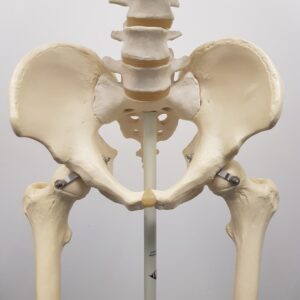What is the labrum of the hip?
The hip labrum is a triangular piece of fibro cartilage that runs around the hip socket. The labrum plays an important role in stabilising and protecting the hip joint. It deepens the hip socket and seals the joint, trapping joint fluid and creating a vacuum effect, which acts to cushion and secure the hip joint.
What causes injury to the labrum?
There are a few things that can make a labral injury more likely:
- Structural changes to the bone in conditions such as femoral acetabular impingement or acetabular dysplasia can change the way the hip joint absorbs load potentially predisposing it to injury.
- Increased joint mobility (Hyper mobility or joint laxity) can increase the load on the labrum and the cartilage.
- High loads or distraction forces in some sports may result in labral injury but often there will have been some pre-existing changes to the bony structure of the joint that would make this acute injury more likely. Often it is an overuse injury caused by repetitive movement.
What symptoms could you experience with a labral injury?
- Deep pain at the front or side of the hip.
- Catching, locking, clicking or giving way.
- Pain when weightbearing.
- Pain when changing direction.
- Discomfort at night.
How is a labral injury diagnosed?
There is no one test to diagnose a labral injury. Instead it is about putting together all the pieces of the puzzle. Your Physiotherapist will listen to your symptoms and history, perform objective testing and may or may not send you for further imaging. It has been shown that while 60% of people with hip pain have a labral tear, 50% of asymptomatic people also have labral tears when imaged. It is therefore unwise to rely on imaging alone for a diagnosis.
What can Physiotherapy offer?
Physiotherapy focuses on managing the load that your hip is under. This may mean avoiding some end of range positions or it may require you to modify the amount of activity that you are doing. We can also perform some hands-on techniques to relieve the pain associated with a hip labral tear in the joint and surrounding muscles. Your Physiotherapist can also prescribe an exercise program to strengthen the surrounding musculature to offload the joint. Physiotherapy is the first line of treatment for a hip labral tear so make sure you see your Physio if you have pain in the groin.






